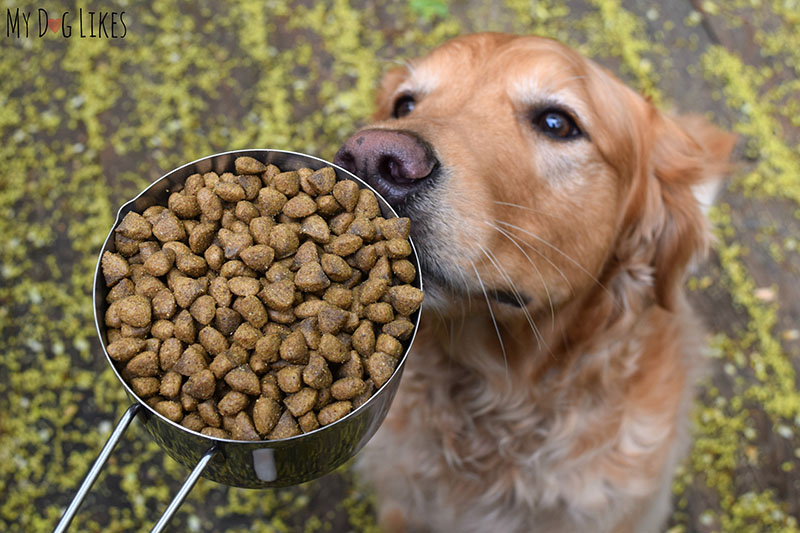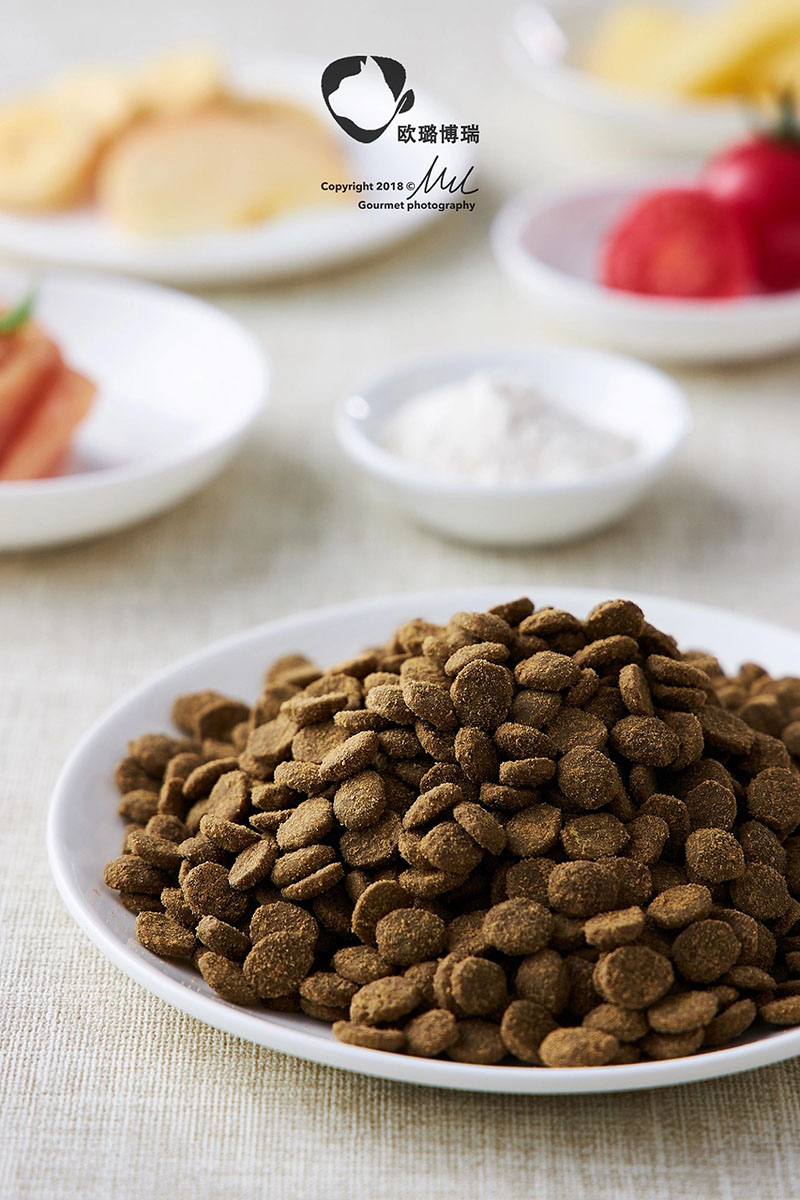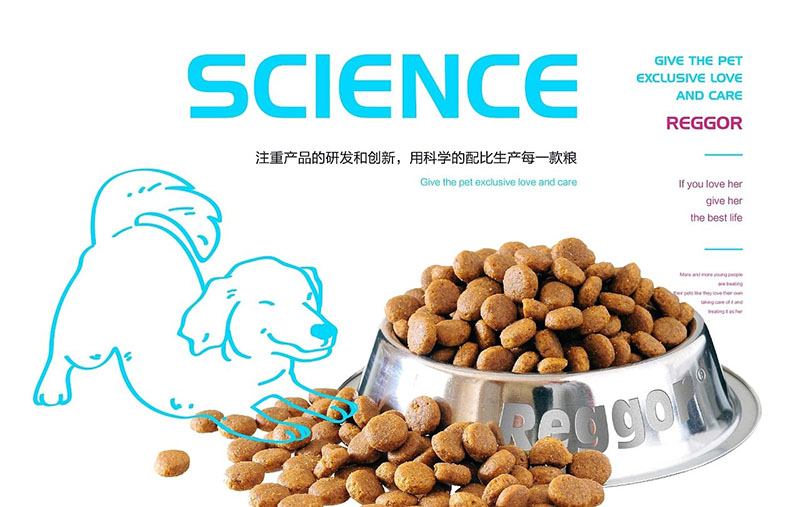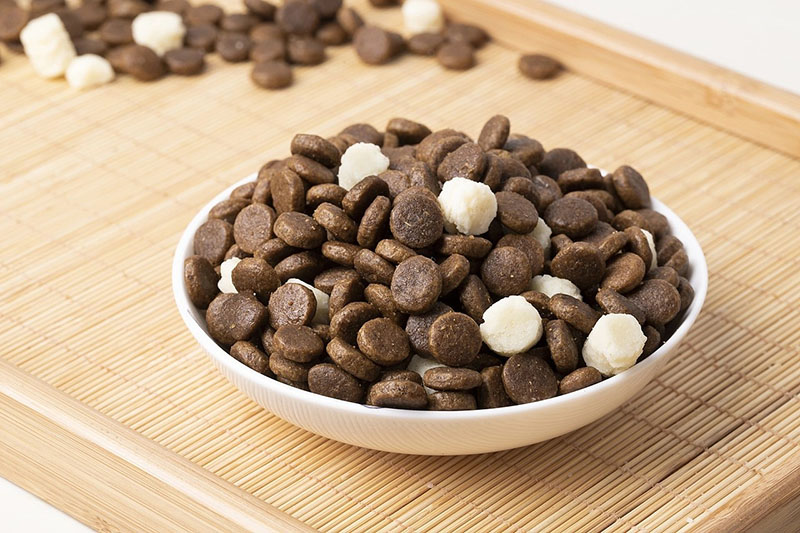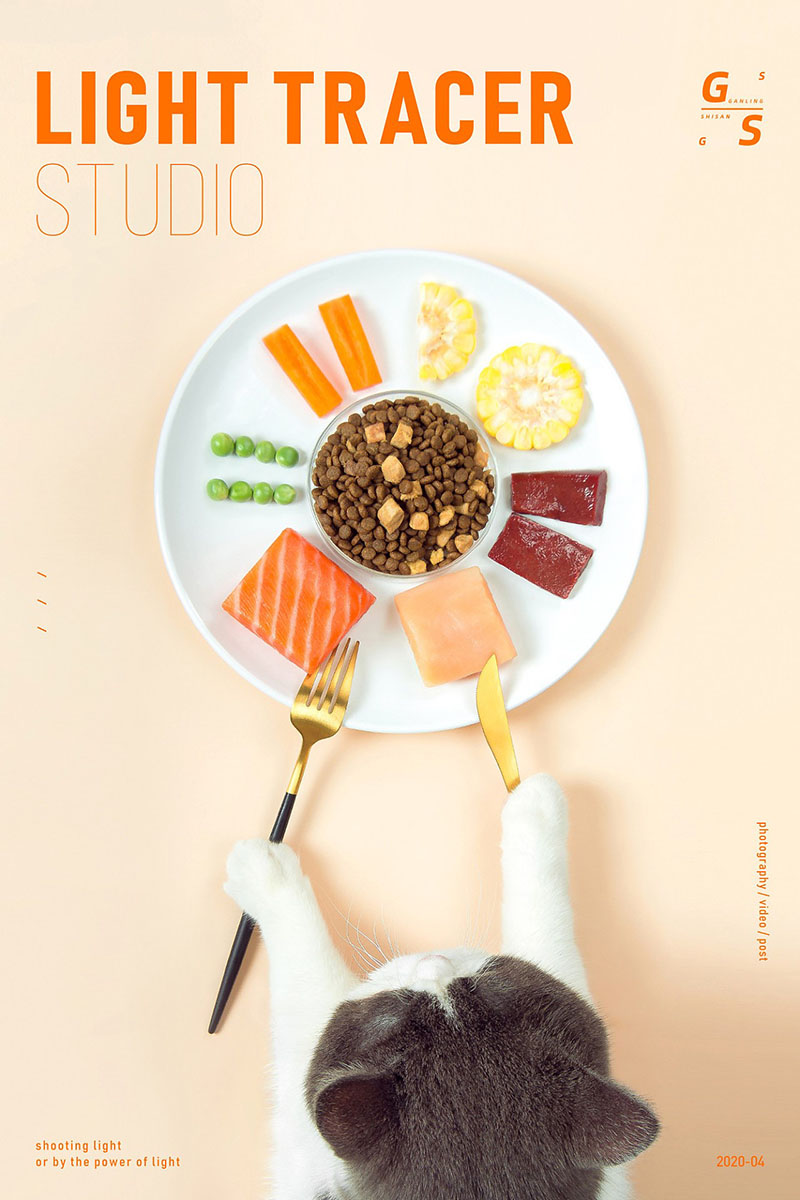Most Pet Owners Feed Their Pets Commercial Pet Food. Because The Commercialized Pet Food Has The Advantages Of Comprehensive And Rich Nutrition, Convenient Eating And So On. According To Different Processing Methods And Water Content, Pet Food Can Be Divided Into Dry Pet Food, Semi-Moist Pet Food, And Canned Pet Food; According To Texture, Pet Food Can Be Divided Into Mixed Food, Soft Wet Food, And Dry Food. Sometimes It Is Difficult To Change a Pet’s Eating Behavior, Even If The New Food Offered To The Pet Is Nutritionally Balanced And Meets The Needs.
Dry Pet Food Generally Contains 10% To 12% Water. Dry Food Also Includes Coarse Powder Food, Granule Food, Rough Ground Food, Extruded Puffed Food And Baked Food, Among Which The Most Common And Popular One Is Extruded Puffed Food. Dry Pet Food Is Mainly Composed Of Grains, Grain By-Products, Soy Products, Animal Products, Animal By-Products (Including Milk By-Products), Fat, Vitamins And Minerals. Dry Cat Food Is Usually Extruded. Cats Do Not Have Mortars, So Cat Food Pellets Must Be Shaped And Sized For Cutting By Incisors Rather Than Grinding With Molars, And The Extrusion Process Is Well Suited To Accomplish This Special Requirement (Rokey And Huber, 1994)(Nrc 2006 ).
Dry Puffed Food
01: The Principle Of Extrusion Expansion
The Puffing Process Is To Mix Various Powders According To The Designed Formula, Then Undergo Steam Conditioning, And Then Extrude Under High Temperature And High Pressure After Aging, And Then The Die At The Exit Of The Extrusion Chamber Suddenly Drops In Temperature And Pressure, Causing The Product Particles To Expand Rapidly. And Cut Into The Required Three-Dimensional Shape By The Cutter.
The Puffing Process Can Be Divided Into Dry Puffing And Wet Puffing According To The Amount Of Water Added; According To The Working Principle, It Can Be Divided Into Extrusion Puffing And Gas Hot-Press Puffing. Extrusion And Puffing Is a Process Of Conditioning And Tempering Materials, Continuous Pressurized Extrusion, Sudden Pressure Reduction, And Volume Expansion.
At Present, Most Of The Dog Food Sold In The Market Is Produced By Extrusion And Puffing. The Extrusion And Puffing Process Can Make The Starch In The Food Reach a Suitable High Level Of Gelatinization, So As To Enhance The Digestibility Of Starch By Pets (Mercier And Feillit, 1975) (Nrc 2006).
02: The Process Of Extrusion And Puffing
The Method Of a Typical Modern Extrusion System Is To Pretreat Various Powders By Adding Steam And Water To Temper And Temper, So That The Materials Are Softened, The Starch Is Gelatinized, And The Protein Is Also Denatured. In The Production Process Of Pet Food, Meat Slurry, Molasses And Other Substances Are Sometimes Added To Improve Palatability.
Conditioner Is The Most Commonly Used Conditioning Equipment For Pellet Feed Production. Steam Conditioning Is The Most Important Factor In The Pelleting Process, And The Amount Of Steam Added Depends On The Content Of Feed Bound Water And The Type Of Feed. When Conditioning, It Is Required That The Material And Water Vapor Have a Long Enough Residence Time In The Conditioner, So That The Water Can Fully Penetrate Into The Material. If The Time Is Too Short, The Water Cannot Penetrate Into The Material, But Only Stays On The Surface In The Form Of Free Water. It Is Not Conducive To The Operation Of Subsequent Processes.
Steam Conditioning Has a Number Of Advantages:
①Reduce Friction And Prolong The Life Of Pressing Film. When Tempering, The Water Can Penetrate Into The Material, And The Water Can Be Used As a Lubricant To Reduce The Friction Between The Material And The Pressing Film, Thereby Reducing The Loss Of The Pressing Film And Prolonging The Service Life.
② Improve Production Capacity. If The Moisture Content Is Too Low During Extrusion, The Viscosity Between The Various Material Components Will Be Poor, And The Forming Ability Will Also Be Poor. Increasing The Moisture Content Can Significantly Increase The Production Capacity Of The Pellets, And When The Effect Is Good, The Production Capacity Can Be Increased By 30%.
③ Reduce Power Consumption. When The Moisture Content Is Low, The Power Consumption Of Subsequent Extrusion And Other Processes Increases, And The Number Of Operations Can Be Reduced When The Same Amount Of Food Is Produced After Steam Conditioning, Thereby Reducing Power Consumption.
④ Improve Particle Quality. Controlling The Amount Of Water Vapor Added According To Different Raw Materials During Tempering Can Improve The Quality Of Granules.
⑤ Improve Food Safety. During The Steam Conditioning Process, The High-Temperature Steam Added Can Kill Various Pathogenic Microorganisms Contained In Various Feed Materials And Improve Food Safety.
The Various Powders After Conditioning Are Directly Sent Into The Extrusion Chamber Of The Extruder, And Additional Steam, Water, And Sometimes Grain Coarse Powder Slurry, Meat Slurry, Etc. Are Added. The Extrusion Chamber Is The Core Part Of The Extrusion System, And Most Of The Tasks Of The Entire System Are Completed By This Part. It Contains Screw, Sleeve And Die Etc. This Component Will Determine Whether The Extruder Will Be a Single Or Twin Screw, If It Has Two Parallel Shafts It Will Be a Twin Screw Extruder, If It Has Only One Then It Will Be a Single Screw Extruder. The Main Function Of This Part Is To Mix And Cook The Ingredients, And It Can Be Filled With Water Or Gas According To The Actual Situation. The Extrusion Chamber Is Divided Into Feeding Part, Mixing Part And Cooking Part. The Mixing Section Is The Entrance Where The Tempered Powder Enters The Extrusion Chamber, And The Density Of The Raw Material Is Very Low At This Time; When The Internal Pressure Of The Mixing Section Increases, The Density Of The Raw Material Also Gradually Increases, And The Temperature And Pressure In The Cooking Section Increase Sharply. Raw Material Structure Began To Change. The Friction Between The Powder And The Barrel Wall, The Screw, And The Powder Is Getting Bigger And Bigger, And Various Powders Are Cooked And Matured Under The Combined Effects Of Friction, Shearing Force And Heating. The Temperature In The Extrusion Room Can Gelatinize Most Of The Starch And Inactivate Most Of The Pathogenic Microorganisms.
Some Pet Food Manufacturers Currently Add Meat Slurry To The Extrusion Process, Which Allows Fresh Meat To Be Used In Recipes Instead Of Dry Meat Alone. Because Of The Higher Moisture Content Of Untreated Meat, This Allows For An Increased Proportion Of Animal Material In The Feed Material Composition. Increasing The Content Of Fresh Meat At Least Gives People a High-Quality Feeling.
The Extrusion Process Has Several Advantages:
①The High Temperature And High Pressure Generated In The Extrusion Process Can Effectively Sterilize;
② It Can Significantly Increase The Expansion Degree Of Starch. There Is Evidence That The Extrusion Process Can Make The Expansion Degree Of Starch Reach More Than 90%, So The Digestibility Of Starch By Pets Is Also Greatly Improved;
③ Various Proteins In Raw Materials Are Denatured To Improve Protein Digestibility;
④ Eliminate Various Anti-Nutritional Factors In Feed Materials, Such As Antitrypsin In Soybeans.
There Is a Die At The Exit Of The Extruder, And When The Extruded Raw Material Passes Through The Die, The Volume Expands Rapidly Due To The Sudden Drop In Temperature And Pressure. By Changing The Die Holes, Pet Food Manufacturers Can Produce Pet Food In Many Combinations Of Shapes, Sizes And Colors. This Ability To Actually Combine Is Very Important As The Market Evolves, But Not Much Can Change In Terms Of Meeting The Nutritional Suitability Of Pet Food.
The Puffed Product Is Cut Into Granules Of a Certain Length By a Rotary Cutter. The Cutter Is Equipped With 1 To 6 Blades. In Order To Adjust Its Rotating Speed, The Cutter Is Usually Driven By a Small Motor Alone.
The Fat Content Of Dry Extruded Pet Food Varies From 6% To More Than 25%. However, Too High a Content Of Fat Cannot Be Added In The Extrusion Process, Because The High Temperature And High Pressure In The Extrusion Process Will Affect Unsaturated Fatty Acids, And Also Affect Extrusion And Food Molding. Therefore, The Method Of Spraying Fat On The Surface After Puffing Is Generally Used To Increase The Fat Content Of The Product. Hot Fat Sprayed Onto The Surface Of Puffed Food Is Easily Absorbed. The Amount Of Fuel Injection Can Be Adjusted By Adjusting The Production Speed And Fat Addition Speed, But This Method Is Prone To Large Errors. Recently, a Control Method That Can Adjust The Amount Of Fat Addition Has Been Developed. This System Includes Speed Regulation System And Positive Pressure Injection Oil Pump System, Its Error Is Within 10%. When Spraying, It Is Required That The Fat Should Reach More Than 5%, Otherwise It Cannot Be Sprayed Evenly. It Is Common To Spray Protein Digests And/Or Flavors On The Surface Of Pet Food To Enhance Pet Acceptance Of The Food (Corbin, 2000) (Nrc2006).
After The Extrusion And Puffing Is Completed, It Needs To Be Dried To Remove The Steam And Water Injected During The Extrusion Process. Generally, The Moisture In Food Can Reach 22% To 28% During Processing, And After Processing, It Needs To Be Dried To Make The Moisture Reach 10% To 12% To Adapt To The Shelf Life Of The Product. The Drying Process Is Generally Completed By a Continuous Dryer With a Separate Cooler Or a Combination Of Dryer And Cooler. Without Proper Drying, Extruded Pet Food Can Go Bad, With Microbial Blooms And Fungal Growth At An Alarming Rate. Most Of These Microorganisms Can Make Cats And Dogs Sick, For Example, Even a Small Amount Of Toxins Produced By Mold In a Bag Of Dog Food Can Affect Dogs. The Commonly Used Measure Of The Amount Of Free Water In Pet Food Is The Index Of Water Activity, Which Is Defined As The Equilibrium Ratio Of The Local Water Pressure And Vapor Pressure On The Surface Of Pet Food At The Same Temperature. In General, Most Bacteria Cannot Grow If The Water Activity Is Lower Than 0.91. If The Water Activity Is Below 0.80, Most Molds Will Not Be Able To Grow Either.
It Is Very Important To Control The Moisture Content Of The Product During The Pet Food Drying Process. For Example, When The Humidity Of The Product Is Dried From 25% To 10%, 200kg Of Water Must Be Evaporated To Produce 1000kg Of Dry Food, And When The Humidity Is Dried From 25% To 12%, It Is Necessary To Produce 1000kg Of Food Drying Food Only Needs To Evaporate 173kg Of Water. Most Pet Food Is Dried In Circular Conveyor Dryers.
03: Advantages Of Extruded Puffed Pet Food
In Addition To The Advantages Of Good Palatability, Puffed Pet Food Also Has a Series Of Other Advantages:
①The High Temperature, High Pressure, High Humidity And Various Mechanical Effects In The Process Of Food Puffing Can Significantly Increase The Gelatinization Degree Of Starch In The Feed, Denature The Protein In It, And Destroy The Lipase Produced By Various Microorganisms At The Same Time To Make The Fat More Stable. It Is Beneficial To Improve The Digestibility Of Animals And The Utilization Rate Of Food.
②The High Temperature And High Pressure Of The Raw Material In The Extrusion Chamber Can Kill a Variety Of Pathogenic Microorganisms Contained In The Raw Material, So That The Food Can Meet The Relevant Hygienic Requirements And Prevent Various Digestive Tract Diseases Caused By Feeding Food.
③Extrusion And Puffing Can Produce Granular Products Of Various Shapes, Such As Cat Food Can Be Produced Into Fish Shape, Dog Food Can Be Produced Into Small Bone Shape, Which Can Improve The Desire Of Pets To Eat.
④ The Digestibility Of Food Can Be Improved By Puffing, And The Palatability And Aroma Of Food Can Be Enhanced, Which Is Especially Important For Young Dogs And Cats Whose Digestive Organs Are Not Yet Developed.
⑤The Water Content Of Dry Extruded Pellet Feed Is Only 10%-12%, Which Can Be Stored For a Long Time Without Causing Mildew.
04: The Effect Of Extrusion On The Digestibility Of Nutrients
The Extrusion Process Of Pet Food Has a Significant Impact On The Digestibility Of Various Nutrients, Especially Starch, Protein, Fat, And Vitamins.
Starch Undergoes Gelatinization Under The Combined Action Of High Temperature, High Pressure, And Moisture During Tempering And Extrusion. The Specific Process Is That The Starch In The Powder Mixture Starts To Absorb Water And Dissolve From The Steam Conditioning, And Loses The Original Crystal Structure. During The Extrusion Process, With The Further Increase Of Moisture, Temperature, And Pressure, The Swelling Effect Of Starch Is Further Intensified, And To a Certain Extent, Starch Granules Begin To Rupture, And At This Time, Starch Begins To Gelatinize. When The Extruded Material Is Extruded Out Of The Die, Because The Pressure Suddenly Drops To Atmospheric Pressure, The Starch Granules Burst Sharply, And The Degree Of Gelatinization Also Increases Sharply. The Temperature And Pressure In The Extrusion Process Directly Affect The Degree Of Gelatinization Of Starch. Mercier Et Al. (1975) Found That When The Water Content Was 25%, The Optimum Expansion Temperature Of Cornstarch Was 170-200oc. Within This Range, The In Vitro Digestibility Of Starch After Gelatinization Could Reach 80%. Compared With The Digestibility Before Expansion (18% ) Has Greatly Increased By 18%. Chiang Et Al. (1977) Found That The Degree Of Starch Gelatinization Increased With The Increase Of Temperature In The Range Of 65-110oc, But The Degree Of Starch Gelatinization Decreased With The Increase Of Feeding Speed.
The Process Of Steam Conditioning And Extrusion Also Has a Significant Impact On The Digestibility Of Protein, And The General Trend Is To Make The Protein Change In The Direction That Is Beneficial To Animal Digestion. Under The Action Of Steam Conditioning And Mechanical Pressure, The Protein Is Denatured To Form Granules, And The Water Solubility Is Reduced. The Higher The Protein Content, The More The Water Solubility Decreases.
The Gelatinization Of Starch Also Has a Significant Impact On The Water Solubility Of Protein. The Gelatinized Starch Forms a Wrapping Membrane Structure Around The Protein, Which Leads To The Decrease Of Protein Water Solubility.
After The Protein Is Expanded, Its Structure Also Changes, And Its Quaternary Structure Is Degraded Into a Tertiary Or Even Secondary Structure, Which Greatly Shortens The Hydrolysis Time Of Protein During Digestion. However, Glutamic Acid Or Aspartic Acid Inside The Protein Will React With Lysine, Which Reduces The Utilization Rate Of Lysine. The Maillard Reaction Between The ε-Amino Group Of Amino Acids And Sugars At Higher Temperatures Also Reduces The Digestibility Of Proteins. Anti-Nutritional Factors In Raw Materials, Such As Antitrypsin, Are Also Destroyed When Heated, Which Improves The Digestibility Of Protein By Animals From Another Aspect.
During The Whole Production Process, The Protein Content In The Food Is Basically Unchanged, And The Potency Of Amino Acids Does Not Change Significantly.
Post time: Mar-02-2023

